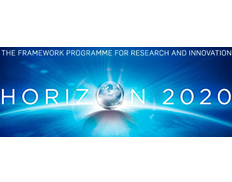Share
Print

Call Updates
Jan 31, 2022 3:24:43 PM
The submission session is now available for: HORIZON-JU-SNS-2022-STREAM-D-01-01(HORIZON-JU-IA)
SNS Large Scale Trials and Pilots (LST&Ps) with Verticals
TOPIC ID: HORIZON-JU-SNS-2022-STREAM-D-01-01
Programme: Horizon Europe Framework Programme (HORIZON)
Work programme part: HORIZON-JTI-SNS-2022
Call: HORIZON-JU-SNS-2022 (HORIZON-JU-SNS-2022)
Work programme year: HORIZON-JTI-SNS-2022
Type of action: HORIZON-JU-IA HORIZON JU Innovation Actions
Type of MGA: HORIZON Action Grant Budget-Based [HORIZON-AG]
Deadline model: single-stage
Planned opening date: 18 January 2022
Deadline date: 26 April 2022 17:00:00 Brussels time
Please refer to the "Specific Challenges and Objectives" section for Stream D in the Work Programme, available under ‘Topic Conditions and Documents - Additional Documents’.
Scope:The target beyond 5G / 6G validation work through large scale trials is expected to cover at least the following domains:
- Application level: two cases may be considered: i) applications already possible with 5G like AR/VR. Validation should demonstrate clear benefits of the considered technologies and architectures in terms of scalability, security, and performance improvements in line with medium to long-term socio-economic scenarios. ii) applications that are not considered within the 5G current developments, such as applications to eventually create a 6G network with a sixth sense that intuitively understands human intentions, making human interactions with the physical world more intelligent, effective, and anticipating our needs (towards Internet of Sense). In that case, the validation should primarily address technological feasibility and affordable deployment.
- Management level: the validation should demonstrate the efficiency of the end-to-end resource management technologies and architectures, through two aspects: i) significant improvement of (new) resource usage efficiency, towards zero-touch management and effective OPEX; ii) additional capabilities offered to vertical users through open interfaces enabling more efficient implementation of use cases (e.g., AI for networks vs. network for AI at the application level).
- Societal level: the validation should demonstrate significant improvement of key parameters like energy consumption (both for the SNS platform and the vertical use case), safety (inc. EMF exposure), coverage and access, cost and affordability, trustworthiness, security and privacy being part of the priority SDGs to demonstrate in “user context”.
The Large-Scale Pilots should be carried out from an end-to-end perspective, with representative technologies covering the full value chain, including devices, connectivity, and service delivery. They should demonstrate the integration of different IoT/cloud/edge/computing environments (public and/or private) towards a distributed environment with a landscape unified management able to support the emergence of a European offer and capability in that domain.
It is expected that beyond the vertical sectors already quite advanced on 5G and structured around 5G Associations (e.g., automotive with 5G-AA and industry 4.0 with 5G-ACIA), other less advanced sectors will join the initiative. This applies notably to sectors highly related to public policies like healthcare, energy, and public safety, also more relevant in a post covid-Green Deal context.
Projects will involve and call for SMEs, scaleups and startups. SMEs, scaleups and startups are expected to play a key role in this process with new market-driven applications that can build value on the 5G infrastructure. This support will be a critical enabler of European-led innovation, fast track adoption, and stimulate private sector investment, across verticals.
The performance capabilities are to be assessed against a set of well-defined KVI’s and KPI’s. As 6G is still largely undefined, proposals may target in the first place KPI’s currently contemplated under authoritative industrial/research environments (e.g., 5G PPP ICT-52-2020 projects, national 6G initiatives or of other regions of the world). However, the proposals should be flexible enough to accommodate the view of KVI’s and new relevant KPI’s as they become available from the wider 6G community and from potential use cases. Also, performance improvement in all domains requires definition of a benchmark against which improvements may be evaluated. Cross project collaboration is needed to define such a benchmark that will be part of the target outcome KPI repository of the SNS Partnerhsip. Also, it is expected that software entities implement the target services in Open-Source Code and with open interfaces for further reutilisation in subsequent phases.
SNS LST&Ps are expected to attract the participation of vertical industries in view of stimulating a strong European participation in future downstream standardisation phases. Therefore, participation of industrial actors with demonstrated strong standardisation impact is desired.
In this early phase, the projects may leverage the existing platforms, or components from them, from 5G Infrastructure PPP Phase 3 End-to-End Facility projects or/and Vertical Pilots projects and/or relevant national or international (ESA) initiatives). The projects may also leverage as relevant/appropriate existing IoT/Cloud/Edge platforms or components that may be integrated together. A smooth transition is envisioned from 5G Infrastructure PPP activities to capitalize on existing results.
